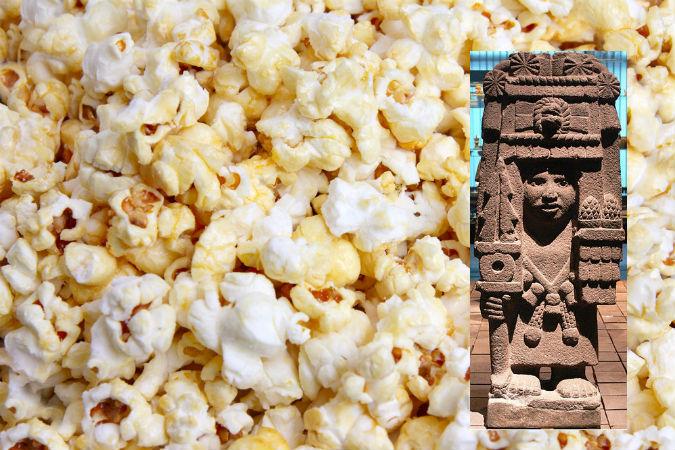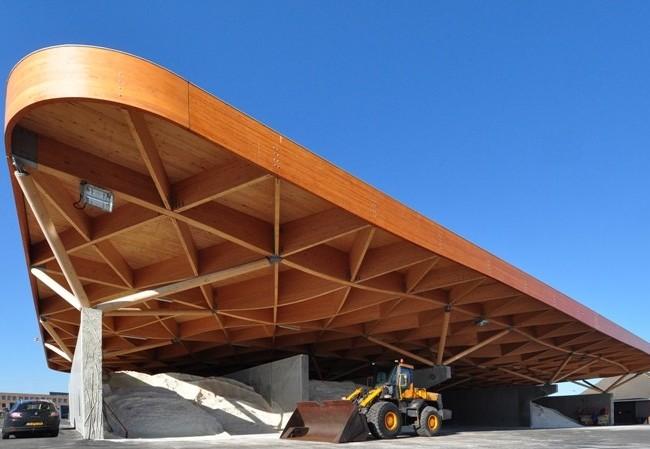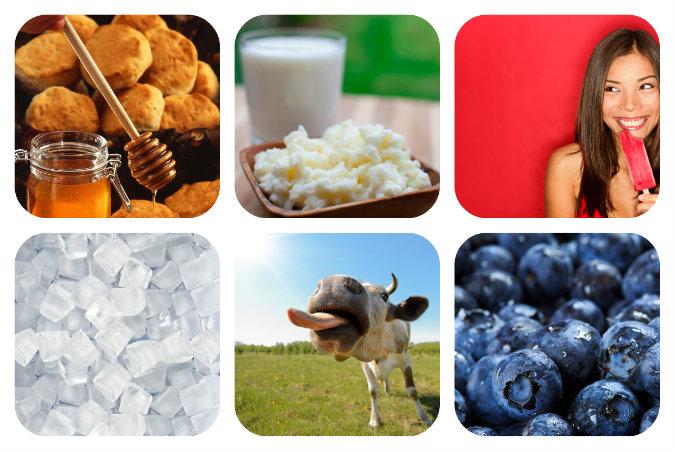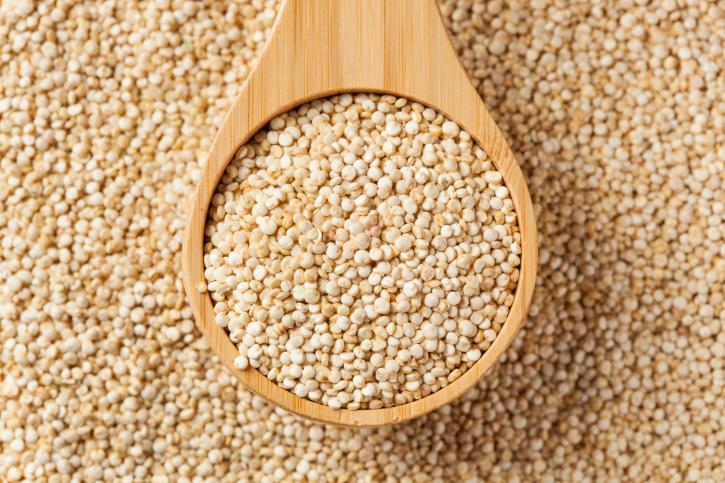Marieke Vos
Author
LATEST
80,000-Year-Old Celtic Popcorn Recipe
This easy (potentially 80,000 year old) recipe for traditional organic Celtic or caramelized popcorn will keep you save from microwave popcorn nasties. Read on to discover exactly what nasties you can find in microwave popcorn, how native Americans popped corn and who Chicomecoatl is.
|
Dutch Architects Are Using Wood in Amazing, Innovative Ways (+Photos)
A wide range of constructions have been nominated for the Dutch Wood Prize, a prize installed in 1999 to advance the use of wood in modern architecture. The Timber and Wood Excellence Prize awarded at the World Architecture Festival in Singapore is much younger, but similar in concept.
|
Healthy Frozen Blueberry Cheesecake Treats DIY
Cubes:
1 cup sour cream
1 cup Cream
3/4 cups kefir cheese
1/2 cup raw honey or a bit less
1/8 teaspoon unrefined sea salt
Sauce:
1/4 cup raw honey
1/4 filtered water
1 cup blueberries
|
Atlantis May Have Been in Bolivia?
Bolivia’s famed mirror-like salt flats, Salar de Uyuni, and the neighboring mountain Pampa Auallagas may harbor the fabled lost city of Atlantis, according to author Jim Allen.
|
3 New Superfood Varieties
The popular superfood quinoa is expected to become a more common, affordable food with the release of new varieties that can grow in European soil.
|
Viking Chess: A Simple Outdoor Family Game With Interesting History
Legend has it that “viking chess,” or Kubb (Swedish for wooden blocks), is a 1,000-year-old game originally played with leftover firewood bits or the bones of viking enemies. It could also be of French origin. Or it could just be a few decades old.
|
7 Organic Garden Crops to Plant Now, It’s Not Too Late
Maybe you were too busy this spring to give your garden much love. Or maybe your plants have died since, leaving room for new life. You can do something about that patch of bare earth, because sowing season isn’t over yet.
|
Fast and Furious Road Etiquette for Green Drivers
Many fuel-saving tips advise driving slowly, but you should actually often drive fast to save fuel and minimize the impact on the environment. Driving slowly works to save fuel on an individual level, but if you’re hoping to drive green, this strategy can cause drivers on the road with you to burn more fuel, so it doesn’t help cut emissions in the bigger picture.
Here are six tips to speed up your whole commuting community in a green fashion, as recommended by Traffic Technology Today:
Traffic lights: Anticipate the green light (have your passengers help you), be in gear and prepared to drive away promptly. Don’t keep too much distance between cars. Don’t overly slow down for a red light, it might turn green soon and you would have slowed down for nothing. Make use of smart in-car traffic light technology or get a traffic light app on your navigation system.
Roundabouts: Stay in one lane, if possible, and use your turn signal to indicate your direction so others won’t stop needlessly for you.
Highways: Accelerate on the entrance ramp to merge at the appropriate speed for that highway. Choose your lane wisely; don’t stay in the outer lanes if you don’t need to. Don’t use your brakes if you don’t have to; try to anticipate slow driving far ahead and reduce speed gradually as needed. If exiting, don’t slow down on the highway; wait until you are on the exit ramp to decelerate.
Two lane roads: Don’t hold up other drivers; stop and let them pass if you can’t maintain the posted speed limit.
Curves and crossroads: Don’t slow down more than you need to for safety; make sure others can pass you when turning off the road.
Cyclists and pedestrians: Should clearly signal turns; it is not necessary to press the button for crossing if you don’t plan to wait for the light to turn green to cross.
When no other drivers are in sight, experiment with these funny old fashioned green drivers’ stratagems (mind you, only when you are alone on the road of course, we don’t want to instigate congestion):
Drive slower
Accelerate steady on entrance ramps. You will hit the highway at a relative slow speed
Decelerate on highways way before the exit ramp (to avoid braking)
Accelerate slow from a traffic light
Turn engine off at red traffic lights
Reduce speed going uphill and increase speed going downhill
|
80,000-Year-Old Celtic Popcorn Recipe
This easy (potentially 80,000 year old) recipe for traditional organic Celtic or caramelized popcorn will keep you save from microwave popcorn nasties. Read on to discover exactly what nasties you can find in microwave popcorn, how native Americans popped corn and who Chicomecoatl is.
|
Dutch Architects Are Using Wood in Amazing, Innovative Ways (+Photos)
A wide range of constructions have been nominated for the Dutch Wood Prize, a prize installed in 1999 to advance the use of wood in modern architecture. The Timber and Wood Excellence Prize awarded at the World Architecture Festival in Singapore is much younger, but similar in concept.
|
Healthy Frozen Blueberry Cheesecake Treats DIY
Cubes:
1 cup sour cream
1 cup Cream
3/4 cups kefir cheese
1/2 cup raw honey or a bit less
1/8 teaspoon unrefined sea salt
Sauce:
1/4 cup raw honey
1/4 filtered water
1 cup blueberries
|
Atlantis May Have Been in Bolivia?
Bolivia’s famed mirror-like salt flats, Salar de Uyuni, and the neighboring mountain Pampa Auallagas may harbor the fabled lost city of Atlantis, according to author Jim Allen.
|
3 New Superfood Varieties
The popular superfood quinoa is expected to become a more common, affordable food with the release of new varieties that can grow in European soil.
|
Viking Chess: A Simple Outdoor Family Game With Interesting History
Legend has it that “viking chess,” or Kubb (Swedish for wooden blocks), is a 1,000-year-old game originally played with leftover firewood bits or the bones of viking enemies. It could also be of French origin. Or it could just be a few decades old.
|
7 Organic Garden Crops to Plant Now, It’s Not Too Late
Maybe you were too busy this spring to give your garden much love. Or maybe your plants have died since, leaving room for new life. You can do something about that patch of bare earth, because sowing season isn’t over yet.
|
Fast and Furious Road Etiquette for Green Drivers
Many fuel-saving tips advise driving slowly, but you should actually often drive fast to save fuel and minimize the impact on the environment. Driving slowly works to save fuel on an individual level, but if you’re hoping to drive green, this strategy can cause drivers on the road with you to burn more fuel, so it doesn’t help cut emissions in the bigger picture.
Here are six tips to speed up your whole commuting community in a green fashion, as recommended by Traffic Technology Today:
Traffic lights: Anticipate the green light (have your passengers help you), be in gear and prepared to drive away promptly. Don’t keep too much distance between cars. Don’t overly slow down for a red light, it might turn green soon and you would have slowed down for nothing. Make use of smart in-car traffic light technology or get a traffic light app on your navigation system.
Roundabouts: Stay in one lane, if possible, and use your turn signal to indicate your direction so others won’t stop needlessly for you.
Highways: Accelerate on the entrance ramp to merge at the appropriate speed for that highway. Choose your lane wisely; don’t stay in the outer lanes if you don’t need to. Don’t use your brakes if you don’t have to; try to anticipate slow driving far ahead and reduce speed gradually as needed. If exiting, don’t slow down on the highway; wait until you are on the exit ramp to decelerate.
Two lane roads: Don’t hold up other drivers; stop and let them pass if you can’t maintain the posted speed limit.
Curves and crossroads: Don’t slow down more than you need to for safety; make sure others can pass you when turning off the road.
Cyclists and pedestrians: Should clearly signal turns; it is not necessary to press the button for crossing if you don’t plan to wait for the light to turn green to cross.
When no other drivers are in sight, experiment with these funny old fashioned green drivers’ stratagems (mind you, only when you are alone on the road of course, we don’t want to instigate congestion):
Drive slower
Accelerate steady on entrance ramps. You will hit the highway at a relative slow speed
Decelerate on highways way before the exit ramp (to avoid braking)
Accelerate slow from a traffic light
Turn engine off at red traffic lights
Reduce speed going uphill and increase speed going downhill
|















